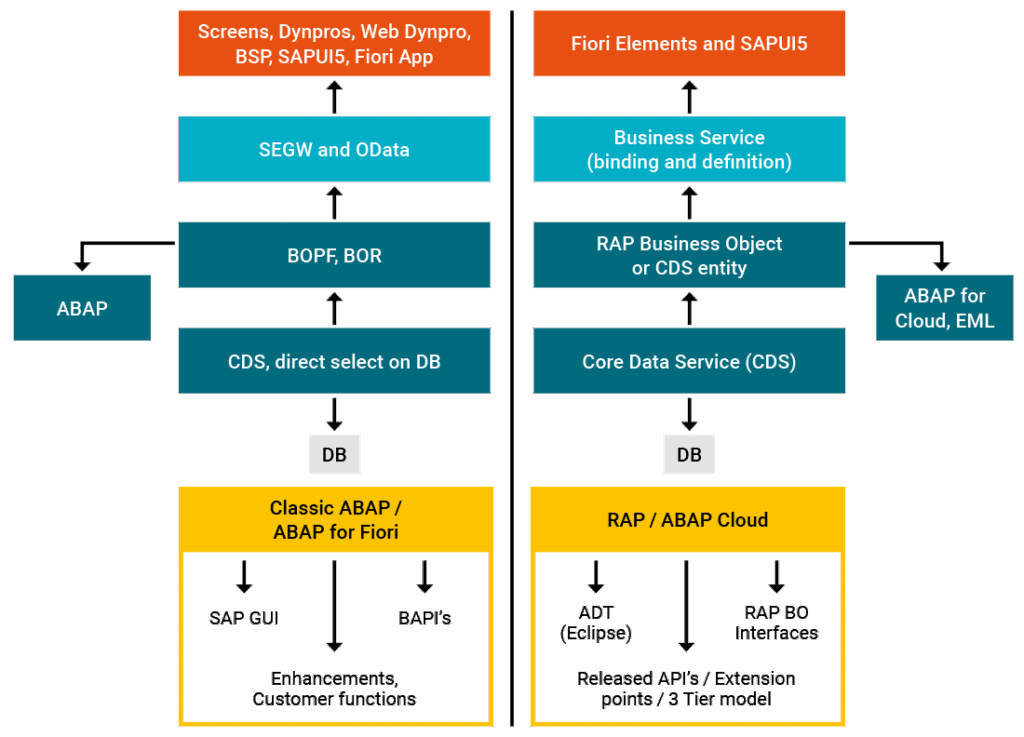ABAP Cloud programming model, RAP, CAP – what is what?
ABAP Cloud is a modern programming model from SAP for the SAP S/4HANA stack and enables the development of cloud-enabled business applications, services and extensions.
RAP (ABAP RESTful Programming Model) is an essential element of ABAP Cloud, because ABAP Cloud is developed with RAP. To a certain extent, RAP offers its “own” language version of ABAP, which can be set at various levels. The system then supports development with syntax checks and other tools to ensure cloud capability.
RAP enables future-oriented programming, as the demand for cloud and hybrid solutions will certainly continue to increase.
CAP – the Cloud Application Programming Model from SAP – is not ABAP-based, but JAVA- or Node.js-based.
RAP technologies
A programming model includes various technologies and tools for development and defines the technologies required for different application purposes. The programming model does valuable work here by taking many technical aspects into account and incorporating them into the development flow. This allows you to concentrate on the business logic during development and standard operations are either given or the points for implementation are clearly shown.

The RAP framework supports SAP NetWeaver and SAP Cloud products, the programming languages are ABAP and EML and the user interface is developed with SAP Fiori Elements and SAPUI5.
OData and CDS Views are the technologies for data and data exchange based on the SAP Hana database.
In RAP, the RAP business objects map the business objects in the sense of a representation of real entities and it offers flexible extension options that enable developers to adapt applications to specific business requirements without changing the SAP core (clean core), as well as other built-in components for testability, support and documentability.
Advantages and disadvantages of RAP
| RAP offers usability and consistency checks for fields and locks that would have to be developed manually by the developer in SAPUI5 apps. | RAP apps offer the possibility to create list and object pages and therefore have their limits. |
| Automated CRUD methods for managed RAP apps | Not all controls are available and it is not possible to create custom controls. |
| Easy expandability | Less flexibility |
| Simple solution for backend development | Not all functions are available on all systems (cloud, on-premise) and therefore limits use without offering an alternative. |
| By using Core Data Services (CDS) and standardized annotations, developers can create consistent and reusable business logic. | |
| Integrated security mechanisms, such as authorization and authentication, that make it easier to develop secure applications. |

